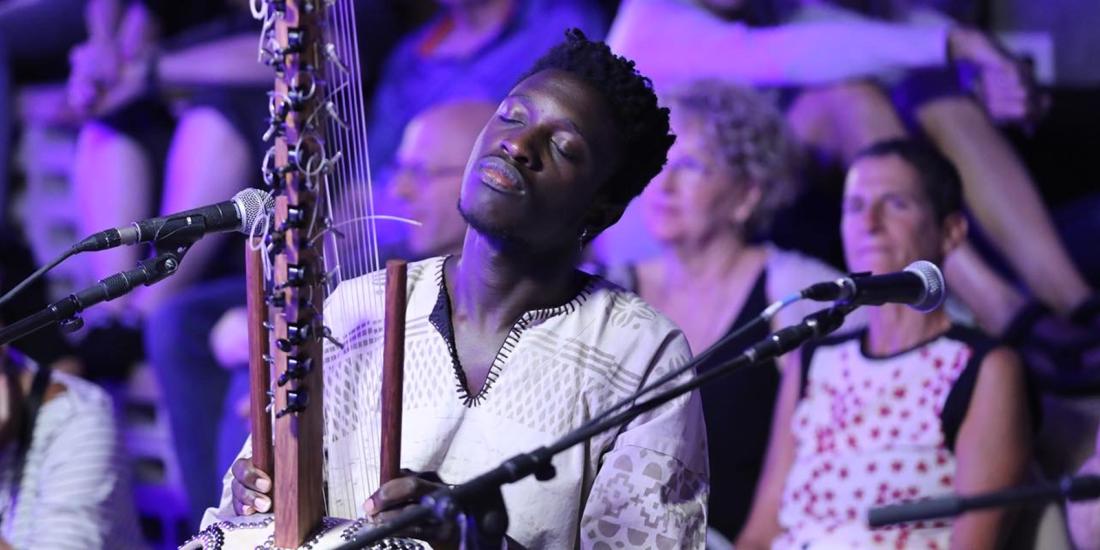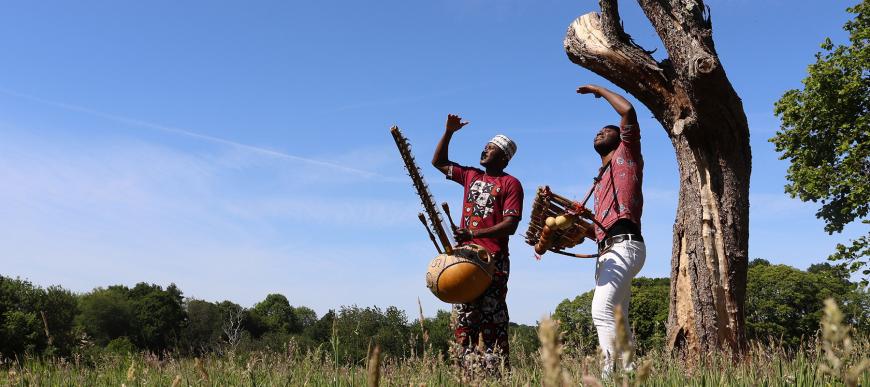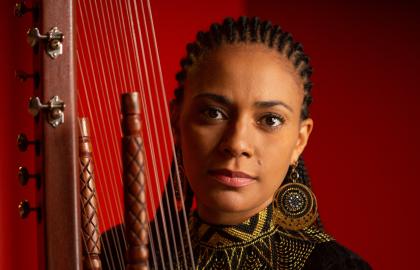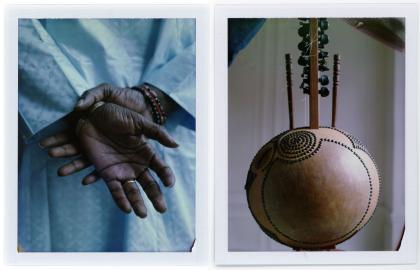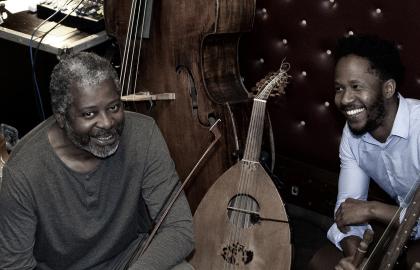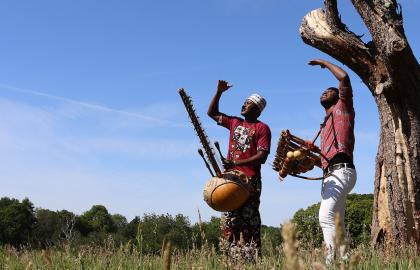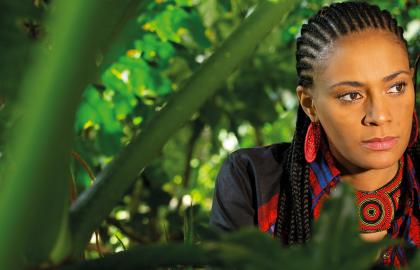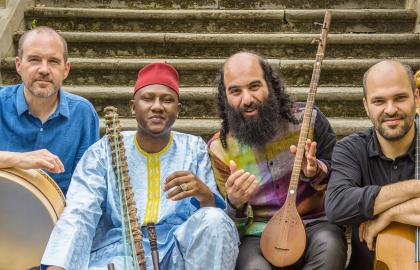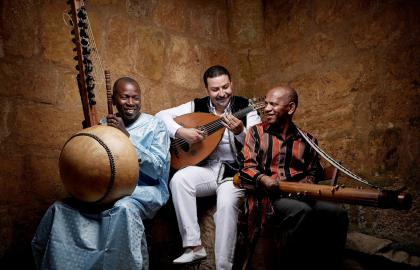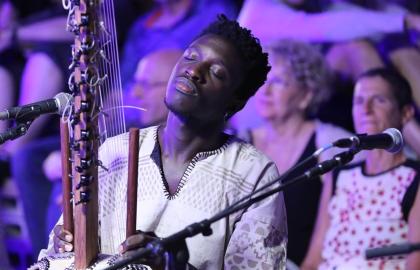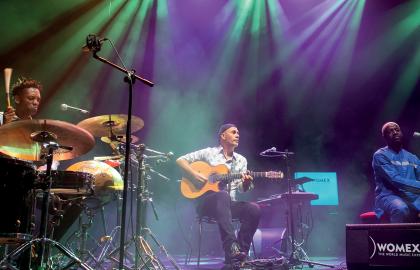A hand-made instrument
The kora has often been described as a harp-lute, but in reality, it belongs to the family of calabash harps found in West African Mandinka culture. This hand-made instrument, built entirely from natural materials, consists of a calabash cut in half for the resonator and a cowskin for the sound board. A long rosewood neck, strung with nylon strings, is attached to the sound board. A wooden bridge stands upright on the sound board, lifting the ten strings in two parallel rows, for the player’s left and right hand.
While the neck is reminiscent of a lute, the kora’s strings are always played like a harp. The advantage of playing the kora with both hands is the ability to play both melody and rhythm at the same time. It has a very distinctive soft sound.
The origins of the griots
The kora is the only calabash harp the griots use. This hereditary caste of professional musicians of the West African Mandé peoples are used as an intermediary when a young man wants to request a girl’s hand in marriage. They are also tasked with preserving the community’s customs, history and genealogy.
As is the case in many other cultures with an oral tradition, a cultural phenomenon’s genesis is often rooted in a narrative – often of a mythological nature. The birth of the caste of the griots has given rise to many stories, most of which are about a man who one day came to his brother’s rescue. After some blood spilling (during a battle or similar), the brother sang the praises of his valiant benefactor.
Here, singing and music express recognition, are a mark of gratitude. The griot also pronounces words of benediction, which then take on a sacred character. As a result, griots are feared and respected in equal measure, for their extraordinary qualities, by their communities. It is said that the griot’s words are so powerful that they can break down doors or make a tree lose all its foliage. That is why griots could be found on battlefields, urging kings and warriors to victory.
The blues of the djinn
Like the griots, the kora also has mythical origins. It is unclear when the kora first emerged. The oldest written account which mentions such an instrument dates from the end of the eighteenth century. In 1797, a Scottish explorer named Mungo Park came across a large harp with eighteen strings, the “korro”, whilst charting the course of the River Niger – it was the first time a Westerner undertook this journey. However, kora players today are not agreed that this is the date that their instrument first came into existence, some even claiming that it dates back to the thirteenth century…
The region in which the kora originated is less debated. Most griots think it came from Kaabu, the old Mandinka kingdom in Senegal and Guinea-Bissau. The kora is so closely associated with the culture of this region – and its very lively dance rhythms and polyphonic melodies – that it is even said to “speak Mandinka”.
Until the mid-1800s, the dominant rite in Mandinka culture was animism. During the second half of the nineteenth century, many rulers converted to Islam, which had already been present in the territory since the eighth century. The many narratives about the kora’s origins are influenced by this. All the narratives agree that the djinns created the kora. These supernatural creatures lived in desert places, and played the kora near streams and in the savannah.
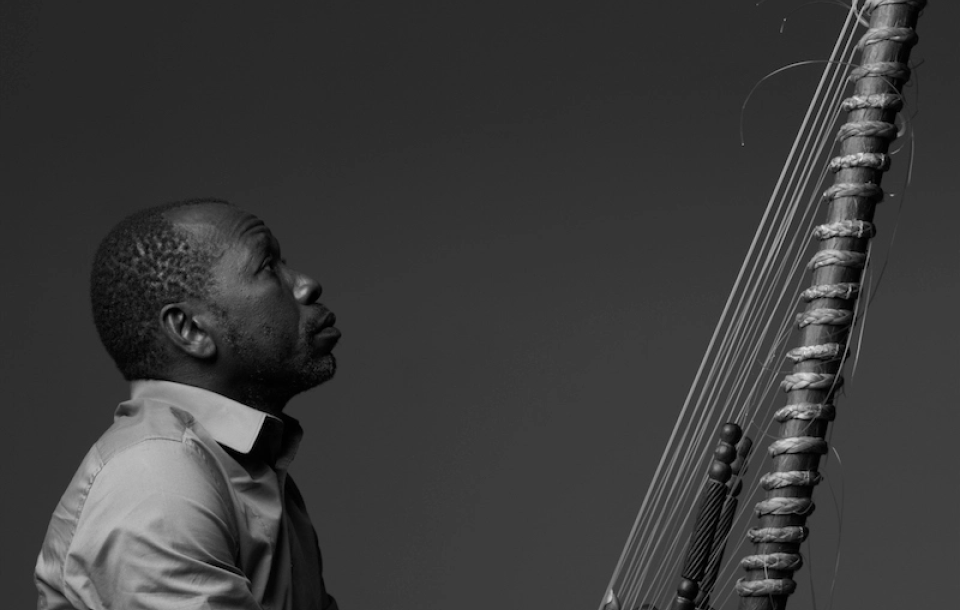
Many believe that Jali Mady Wuleng, who is better known as Sissoko, was the first player to discover the kora. Bewitched by its pleasant sound, he set a trap for a djinn and succeeded in appropriating his instrument. This myth only compounds the mystery that surrounds the kora. Even today, many people agree that the kora is on loan to the griots from the djinns and the musician’s impassioned and irrational behaviour can be explained as a mark of the maleficent hold that these creatures still exercise on them. They believe that a great musician should therefore not display all of his virtuosity as he may one day experience the unfortunate consequences of this. Like the guitar player who sold their soul to the devil on a crossroads at midnight to become a great blues player, the kora players are believed to be under the spell of the djinns to enjoy the pleasure playing their instrument inspires.
The twentieth century: a global recognition
From the eighteenth century onwards, several European powers colonised a large part of Mandinka territory, which only regained independence in the 1960s. During the colonial era, the kora was a very popular instrument, as the colonials preferred its soft melodious sound to the harsher and loud percussive sound of the balafon (a xylophone) and the drums.
After independence, the kora became a symbol of modernity and cultural authenticity in West Africa. Kora players became national celebrities, who were feted by the presidents of the new states.
In the 1950s, several kora players established formidable reputations, both on the national and international scene, through radio, recordings and international tours. One of these celebrities was Soundioulou Cissoko, who was the favourite artist of the Senegalese president Leopold Sedar Senghor. Others include the virtuoso kora player Lalo Keba, and Malian artists such as Batrou Sekou Kouyaté, Djelimady Sissoko and Sidiki Diabaté.
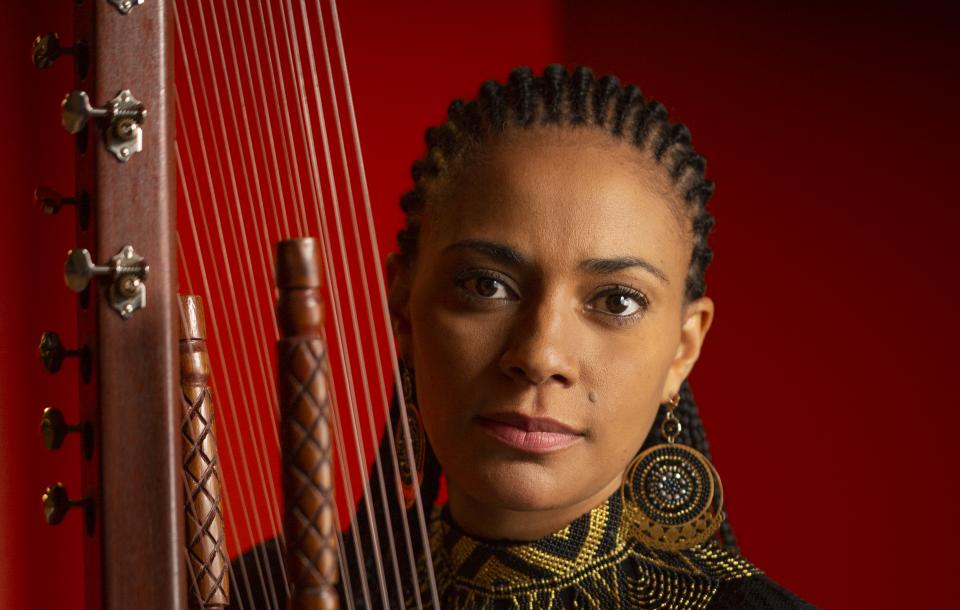
Nowadays, kora musicians are creating a fusion of their art with other musical traditions. The concerts in Bozar's Kora Days pay tribute to these adventurers, who exalt the primary purpose of their art, namely to foster communication and encounters between individuals.
After Lucy Duran, "The Kora: Tales of a Frontier Instrument", World Circuit Records, 2008.
